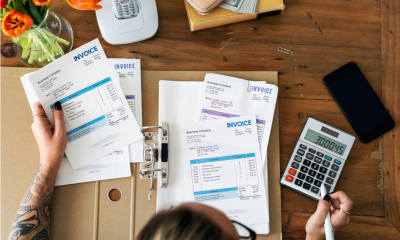
Effective VAT planning aims to ensure that VAT is relatively painless, and that you are reclaiming as much as possible of the VAT you pay.
You'll find useful VAT calculators and tools in this section to help, including official advice from HMRC - but to get detailed advice on VAT-planning opportunities, talk to your accountant.
How VAT works
VAT-registered businesses charge VAT on sales of most goods and services. VAT is generally charged at a standard rate (20%), though there is also a reduced rate (5%) and a zero rate that apply to some goods and services.
If you are VAT-registered, you must charge VAT at the appropriate rate on your sales. Whether you are VAT-registered or not, you'll be paying VAT on goods and services you buy from VAT-registered businesses.
VAT-registered businesses must pay the VAT they have charged to HM Revenue & Customs (HMRC). In effect, you are collecting VAT on their behalf. But provided you are not selling VAT-exempt goods or services, you can offset any VAT you have paid on your purchases against this.
Businesses that are not VAT-registered cannot reclaim any VAT they have paid.
VAT registration
VAT registration is legally required if your VAT-taxable turnover exceeds the VAT threshold of £90,000 in a 12 month period or is expected to do so in the next 30 days alone. You may also choose to register if you think this will be advantageous to you. VAT-registered businesses must keep proper VAT records and issue VAT invoices to their customers.
VAT returns
You also need to complete VAT returns, typically quarterly, and pay HMRC any VAT you owe them. All VAT-registered businesses must send their VAT returns online and pay their VAT electronically. All VAT-registered businesses must also be compliant with the latest Making Tax Digital requirements.
All small businesses (and personal tax payers) now have their own online tax account where they can view tax transactions across the range of business taxes including Self Assessment, Corporation Tax, VAT and PAYE for employers and make payments at any time.
VAT planning and keeping VAT records
VAT returns and record-keeping can be time-consuming. Smaller businesses may be able to reduce the paperwork (and in some cases their costs) by opting for one of the simplified VAT accounting schemes.
If you aren't required to register for VAT, you can avoid the paperwork. But it may be worth registering voluntarily if you pay significant amounts of VAT on your purchases. Provided your customers do not mind being charged VAT (eg if they are VAT-registered businesses) and you do not sell exempt supplies, registering will allow you to reclaim the VAT you pay.
VAT rules
There can be added VAT complications, for example, for businesses that sell VAT-exempt supplies, for company cars, and for purchases of supplies that are also used privately. Different VAT rules also apply for international trade. It's worth taking VAT advice, particularly if any of these apply to you.
Finally, it's worth mentioning that VAT problems are not uncommon and you should also expect a VAT inspection by HMRC from time to time. You should certainly take advice if you have any concerns relating to VAT.
To help you get started with VAT, HMRC has produced a helpful online guide. As you work through the guide, it will give you information about whether or not you need to register for VAT and how to do this.
If you are already registered for VAT, find out more in the HMRC guide: VAT - how VAT works.


